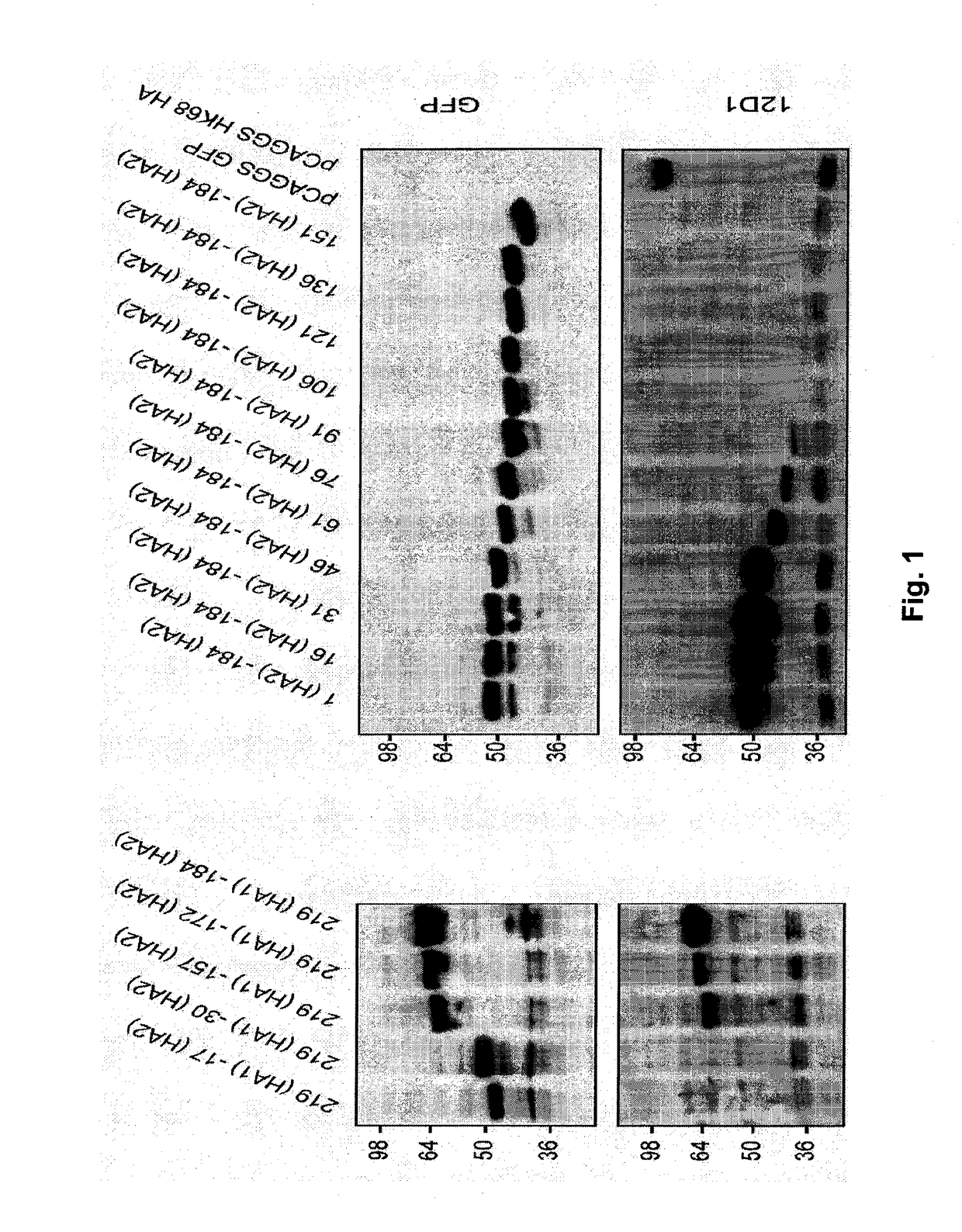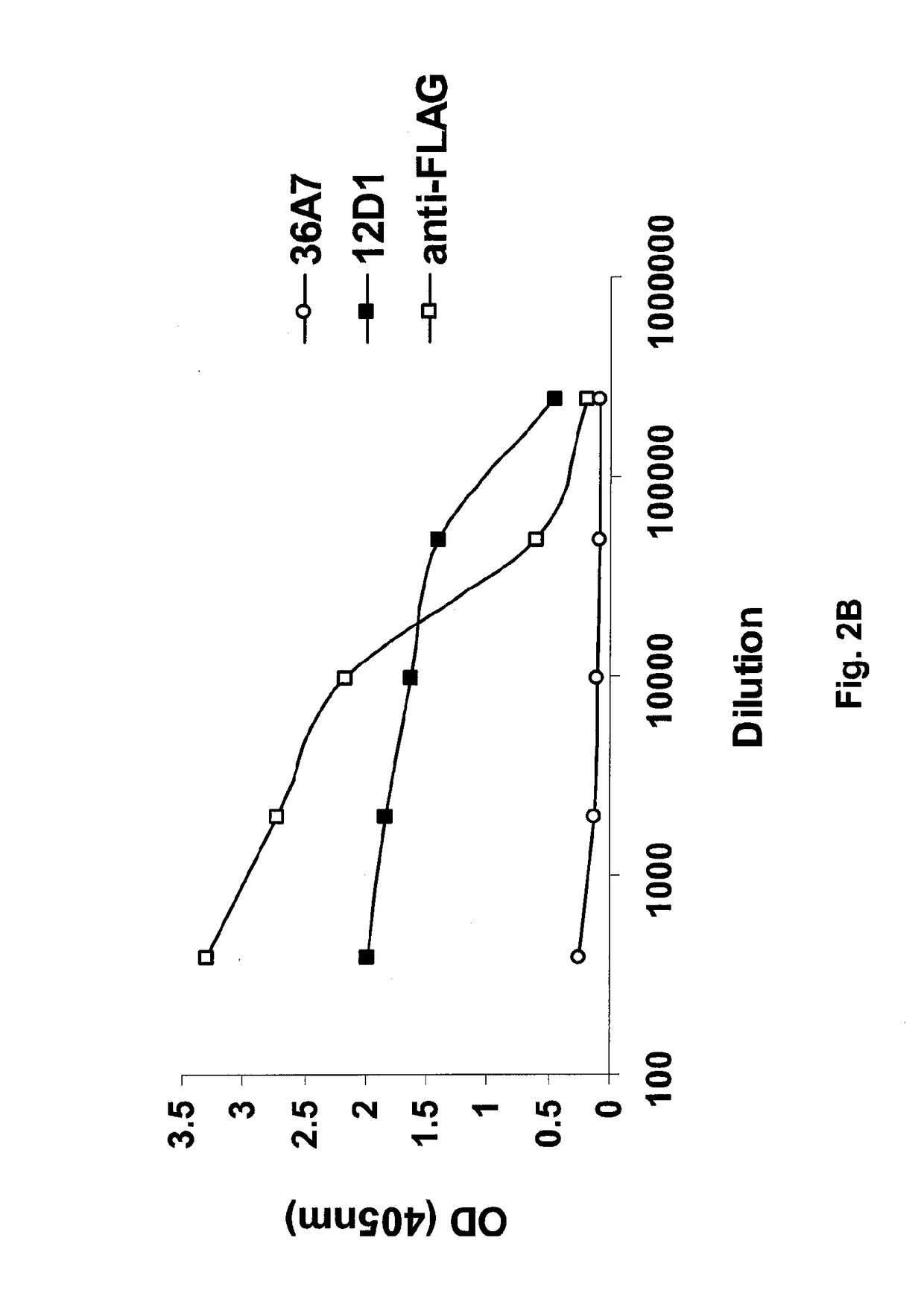Vaccines for use in the prophylaxis and treatment of influenza virus disease
a technology for influenza virus and prophylaxis, applied in the field of vaccines for use in the prophylaxis and treatment of influenza virus disease, can solve the problems of major pandemics, influenza viruses are the cause of infrequent pandemics, cumulative morbidity and mortality caused by seasonal influenza, etc., to facilitate purification and/or solubility of flu polypeptides, and facilitate multimerization of flu polypeptides. , to achieve the effect of reducing or
- Summary
- Abstract
- Description
- Claims
- Application Information
AI Technical Summary
Benefits of technology
Problems solved by technology
Method used
Image
Examples
Embodiment Construction
[0064]5.1 Flu Polypeptides
[0065]Provided herein are flu polypeptides. While not intending to be bound by any particular theory of operation, it is believed that the flu polypeptides are useful for presenting one or more relatively conserved antigenic regions of the HA2 hemagglutinin subunit (e.g., the HA2 hemagglutinin subunit long alpha-helix) to a subject's immune system in order to generate an immune response that is capable of cross reacting with, and preferably protecting against, a plurality of influenza virus strains from a single subtype or 2, 3, 4 or more different subtypes.
[0066]In certain embodiments, a flu polypeptide comprises a core polypeptide or modified core polypeptide.
[0067]In certain embodiments, a flu polypeptide is acetylated at its N- and / or C-terminus. In certain embodiments, a flu polypeptide is pegylated.
[0068]In certain embodiments, a flu polypeptide comprises one, two, three or more core polypeptides and / or modified polypeptides.
[0069]In certain embodimen...
PUM
| Property | Measurement | Unit |
|---|---|---|
| molecular weights | aaaaa | aaaaa |
| molecular weights | aaaaa | aaaaa |
| molecular weights | aaaaa | aaaaa |
Abstract
Description
Claims
Application Information
 Login to View More
Login to View More - R&D
- Intellectual Property
- Life Sciences
- Materials
- Tech Scout
- Unparalleled Data Quality
- Higher Quality Content
- 60% Fewer Hallucinations
Browse by: Latest US Patents, China's latest patents, Technical Efficacy Thesaurus, Application Domain, Technology Topic, Popular Technical Reports.
© 2025 PatSnap. All rights reserved.Legal|Privacy policy|Modern Slavery Act Transparency Statement|Sitemap|About US| Contact US: help@patsnap.com



